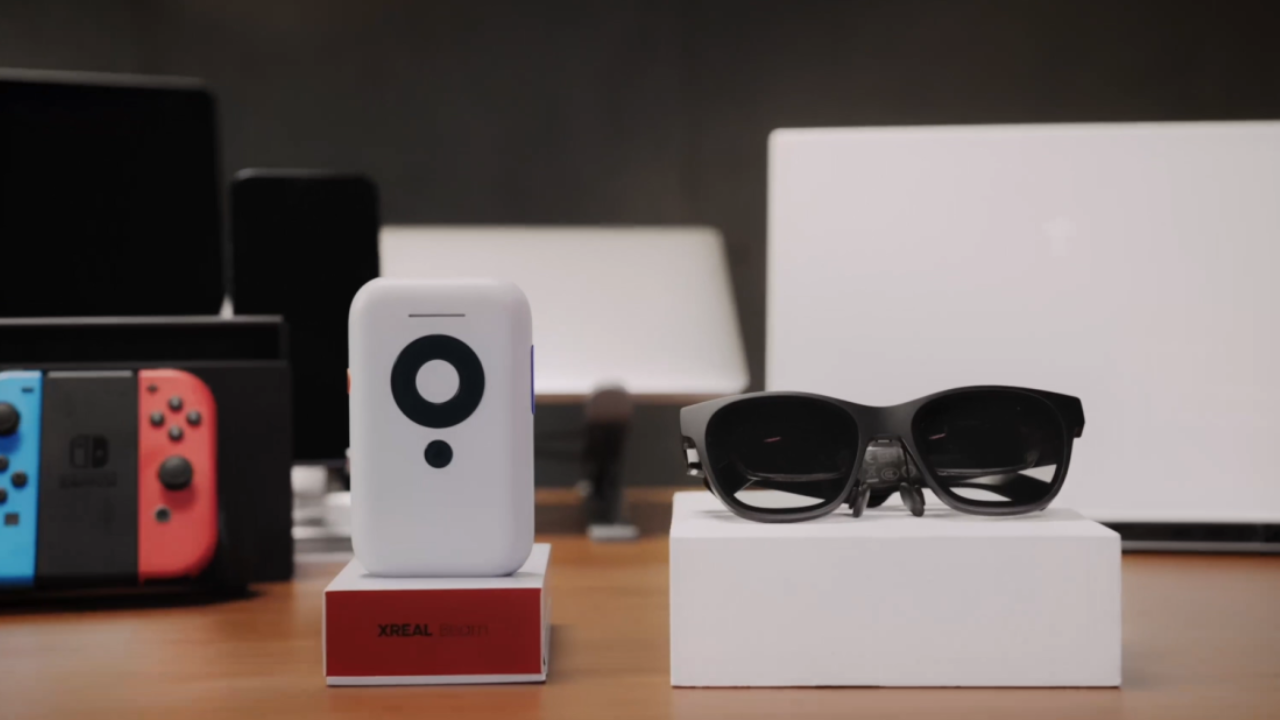Augmented reality (AR) glasses are at the vanguard of technological innovation, providing a transformative bridge between the digital and physical worlds. These cutting-edge eyewear technologies have moved beyond the world of science fiction, becoming practical instruments that enhance our daily lives.
AR glasses, which include an integrated display and powerful sensors, overlay digital information onto the user’s real-world environment, perfectly mixing the virtual and tangible. This augmentation varies from contextual information and interactive visuals to immersive experiences that revolutionize how we view and interact with the world.
AR glasses are being used in a variety of areas, from healthcare and education to manufacturing and entertainment, revolutionizing industries and unlocking new dimensions of productivity and engagement. The elegant, wearable appearance of augmented reality glasses conceals a complex integration of optics, sensors, and networking, creating a user experience that promises to alter the way we work, study, and enjoy ourselves.
Consideration Factors to Choose the Right AR Glasses
The field of augmented reality (AR) has grown at an unparalleled rate, and the market for AR glasses has gotten increasingly diverse as a result. Choosing the best augmented reality glasses might be difficult, given the plethora of options available, each with its own set of features and functionalities. This thorough guide strives to provide a complete roadmap, empowering you to make an informed decision based on your individual needs and preferences.
Understanding of AR Glasses
Augmented reality glasses are wearable gadgets that project digital and virtual information onto the actual environment. To improve the user’s perspective of their surroundings, these devices use a combination of sensors, cameras, computing units, and display technologies. AR glasses augment the real world by including digital components, whereas VR glasses entirely immerse the user in a virtual experience, blocking out the real world. Consider whether you prefer supplementing reality or immersing yourself in a virtual world.
Identify Your Use Case
Begin by deciding what your AR glasses will be used for. Are you a professional looking for tools to help you with work-related duties like field maintenance, design, or medical applications? Think about the precise applications you want to employ with the AR glasses. Some models are tailored to specific industries, such as business, healthcare, education, or gaming. Understanding your requirements can help you limit your possibilities.
Hardware Specification
Examine the camera specifications, such as resolution and field of view. Cameras are essential for capturing real-world surroundings and allowing users to interact with virtual material. Consider where the cameras should be placed on the glasses for best tracking and usage. Investigate the display technologies utilized in augmented reality glasses. Waveguide displays, micro-OLED panels, and other technologies are common.
Software and Compatibility
Examine the operating system that is installed on the AR glasses. Platforms provide diverse app ecosystems and user interfaces. Check that the operating system matches your preferences and that the programs you wish to use are supported. Examine the availability and diversity of applications in the ecosystem of AR glasses.
Connectivity Option
Examine the AR glasses’ wireless connectivity possibilities. Bluetooth and Wi-Fi connectivity are popular, allowing for smooth interaction with smartphones and other devices. Examine the range and stability of wireless communications. Some AR glasses include cellular connectivity, allowing them to function independently of a smartphone. Consider whether cellular connectivity is essential for your use case.
User Interaction
Investigate the user interface capabilities, particularly gesture recognition. Gesture controls make it possible to navigate and interact with virtual material intuitively. Assess the precision and responsiveness of gesture recognition features. Consider the utility of in-built microphones and voice recognition software. Reliable voice commands improve hands-free control and overall usefulness, making the user experience more intuitive.
Privacy and Security
Check for the presence of camera controls if you are concerned about privacy. When not in use, certain AR glasses allow users to disable or cover cameras, offering an extra degree of anonymity. Investigate the data security procedures put in place by the manufacturer. Encryption, secure authentication, and privacy measures all help to protect user data.
Summary
Choosing the best augmented reality glasses requires considerable thought about your intended purpose. You may make an informed decision that corresponds with your preferences and improves your augmented reality experience by understanding your needs and thoroughly examining available solutions. As technology advances, staying up-to-date on the newest innovations in the AR glasses market will enable you to make future-proof decisions that match your changing demands.
